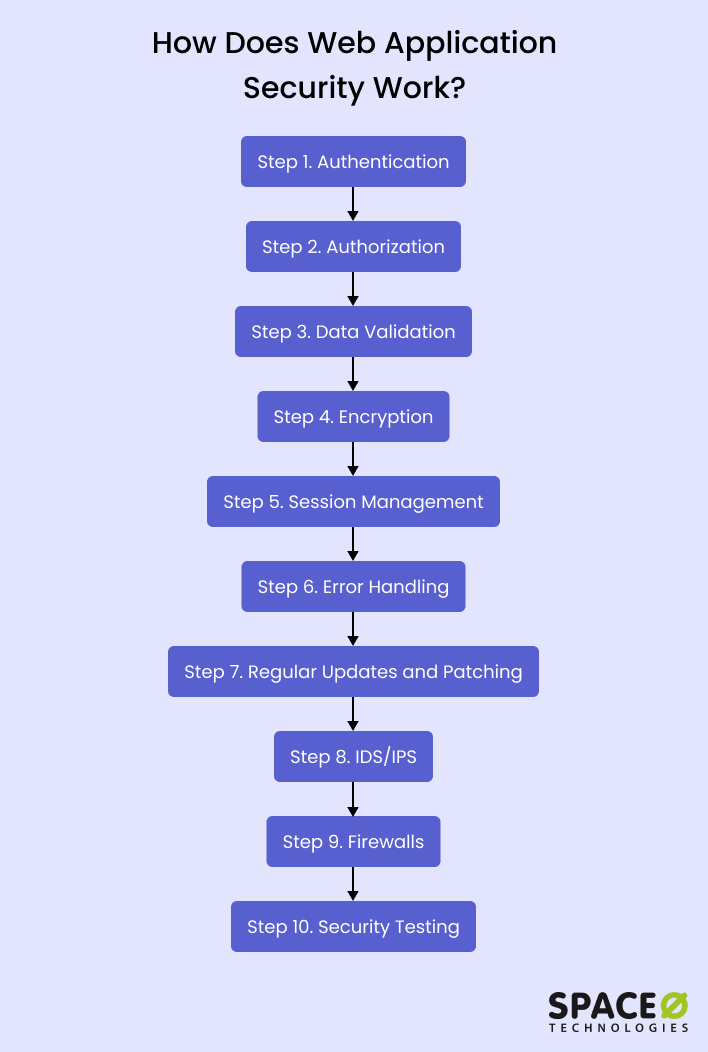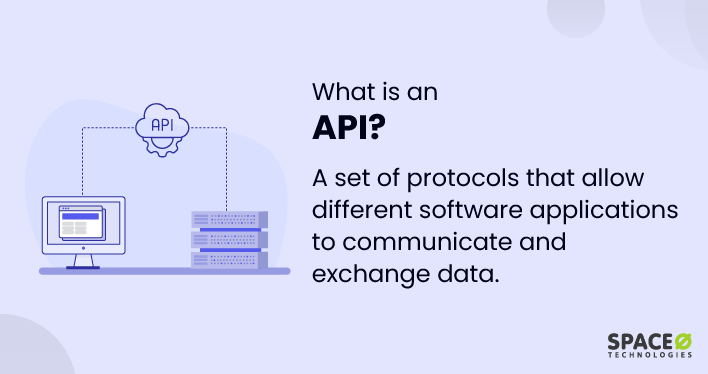Table of Contents
What is Web Application Security?
Web application security refers to the protective methods used for web applications. These are processes, strategies, and security measures designed for their protection. The aim is to safeguard the applications from threats and vulnerabilities. These could compromise the applications’ functionality, data integrity, or the sensitive information they handle.
Web application security is a crucial aspect of the field of cyber security. It involves implementing protective methods and procedures specifically designed for protecting web applications. These applications ranging from simple websites to complex software systems can be vulnerable to various security threats. If you are looking for ways to protect the web application, here is a complete guide to the best practices for developing secure web applications.
These security threats, if not addressed, can lead to severe consequences like the disruption of functionality, breach of data integrity, access management, and exposure of sensitive information. Threats can take many forms, such as SQL injection, cross-site scripting, or denial-of-service attacks.
What is the Importance of Web Application Security?
Web application security is of paramount importance due to the following reasons:
Protects Data
With the increasing digitization of services, more and more sensitive data is being stored and processed online. A lapse in web app security can result in data breaches leading to loss, data theft, or unauthorized access to this data.
Ensures Business Continuity through Security
Web applications often form the backbone of many business operations. A security incident could disrupt these web services, affecting business continuity, which could lead to significant financial losses.
Regulatory Compliance via Robust Web Application Security
Many industries have regulations that require businesses to take appropriate steps to secure their data like GDPR in Europe or HIPAA in the U.S. Therefore, proper web application security can ensure compliance with these regulations.
Maintains Trust and Reputation through Secure Practices
Breaches in security can severely damage a company’s reputation, undermining customer trust and potentially leading to loss of business. A secure web app can help maintain and enhance a company’s standing.
Mitigates the Risk of Cyber Threats
Robust web application security solutions, including the use of web application firewalls, mitigate the risk of such cyber threats. A web application firewall (WAF) provides a protective shield between a web application and the internet, monitoring and controlling the traffic to identify and block any malicious activity. If you are not aware of WAF, here is a definition of WAF.
Enhances User Experience by Securing Web Applications
Web applications with solid security ensure a safer and more reliable user experience. This can contribute to user satisfaction and ongoing user engagement in protecting websites.
How Does Web Application Security Work?
Web application security is a broad field that involves various strategies, tools, and methodologies to protect web applications from threats and web application vulnerabilities.
Here’s a simplified overview with a diagram.

- Authentication: This is the process of verifying the identity of a user, device, or system. It often involves usernames and passwords, but can also include two-factor user authentication (2FA), biometrics, and other methods.
- Authorization: Once a user is authenticated, they need to be authorized. This means determining what actions the user is permitted to perform within the application.
- Data Validation: All input data should be validated before it is processed by the application. This can help prevent web application attacks such as SQL injection or cross-site scripting (XSS).
- Encryption: Sensitive data should be encrypted in transit and at rest. This means that even if data is intercepted or gain access without authorization, it cannot be read without the encryption key.
- Session Management: When a user logs into a web application, a session is created. Authentication and session management are crucial to prevent attacks such as session hijacking.
- Error Handling: Proper error handling can prevent an attacker from gaining valuable information about the application. For example, detailed error messages can reveal insights about the application’s structure or functionality that could be exploited.
- Regular Updates and Patching: Keeping the web application and its underlying systems up to date is crucial. Many attacks exploit vulnerabilities in outdated software.
- Intrusion Detection and Prevention Systems (IDS/IPS): These systems monitor network traffic for suspicious activity and issue alerts when such activity is detected.
- Firewalls: Firewalls control incoming and outgoing network traffic based on predetermined security rules, protecting the application from malicious traffic or attacks.
- Security Testing: Regular security testing, such as penetration testing, can help identify application vulnerabilities before an attacker does.
Which are the Common Web Application Security Risks?
There are many different security risks that can affect web apps. Here are the 5 of the most common web application security risk:
- Injection Attacks: These occur when an attacker sends harmful data to the web application with the intention to trick it into executing unintended commands. Examples include SQL, OS, and LDAP injection attacks.
- Cross-Site Scripting (XSS): This type of attack happens when an attacker injects malicious scripts into web pages viewed by other users. The victim’s browser has no way to know that the script should not be trusted, and will execute the script, often with harmful effects.
- Cross-Site Request Forgery (CSRF): In this type of attack, an end user is tricked into clicking a link or loading a page that contains a malicious request. It is dangerous because it can lead to harmful actions being performed without the user’s knowledge or consent.
- Security Misconfiguration: This can happen if an application or its platform is configured in an insecure way, which could gain unauthorized access to sensitive information.
- Sensitive Data Exposure: Web apps that do not properly protect sensitive data, such as credit card numbers or authentication credentials, can enable attackers to steal or modify this data.
By understanding these common risks, organizations can better protect their web apps and ensure they remain secure. It’s also important to note that the Open Web Application Security Project (OWASP) regularly releases a list of the top 5 most critical web application security risks to help organizations understand and mitigate these threats.
In conclusion, web application security is a critical aspect of overall cybersecurity, and its importance cannot be understated in today’s digital age. It protects sensitive data, ensures business continuity, maintains trust, and provides a safe user experience. By understanding and addressing the common security risks that exploit application vulnerabilities and implementing strong security measures, organizations can effectively safeguard their web applications against potential cyber threats.




